#quercus the magnificent
Text

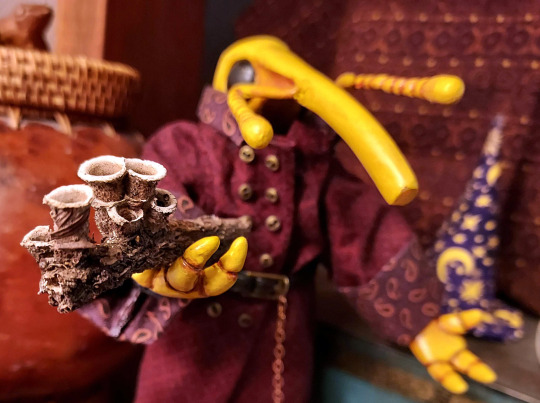
a wizard offers you a hit. wyd
#quercus the magnificent#weevil#wizard#birds nest fungi#art doll#weezard#bug people#quieres?#i think the fungus is Nidula niveotomentosa but im dumb as shit about fungi
4K notes
·
View notes
Text


Climb time! Feat. @bowelfly's magnificent weevzard, Quercus
1K notes
·
View notes
Text

Quercus the Magnificent for @bowelfly Painted with Watercolour and coloured pencil.
I have the best clients honestly!! These types of commission are still open. They're £50 each, you can send me a message here or email me at [email protected]! I'd love to draw more bugfolk or interesting critters.
#my art#insect art#watercolour#art commissions#commissions open#illustration#storybook#entomology#weevil
636 notes
·
View notes
Text

Another artfight! Weevil wizard!! 🌰💕🪲
Quercus the Magnificent for @bowelfly
260 notes
·
View notes
Text
every time i see @bowelfly 's Quercus the Magnificent i get the urge to make a wooden art doll of my own
1 note
·
View note
Text
Coast Live Oak
Coast live oak can get massive!
Valley oak and coast live oak are the two most magnificent oaks of California. Valley oak likely receives more notoriety. It stands taller, and defoliates to expose its sculptural form through winter. Coast live oak, Quercus agrifolia, is almost as grand within its evergreen foliage. It can grow as tall and broad as seventy-five feet, with trunks wider than ten…

View On WordPress
2 notes
·
View notes
Photo


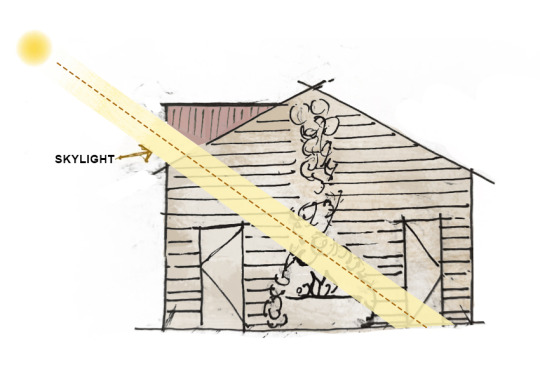
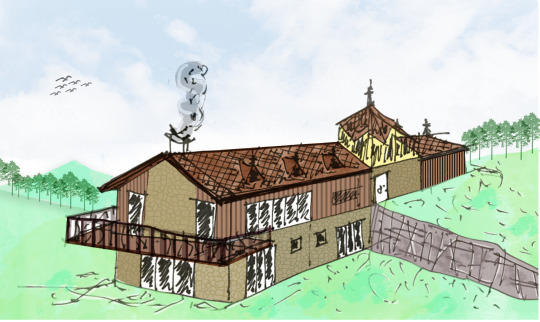
On the West side of the massive ring of cupped oak (Quercus glauca) which soars a hundred feet into the sky, lays an elegant piece of land. Partly a fruit orchard, partly a steep rocky slope and partly a moist forested area, the land offer a spectrum of landscapes at an altitude of 1850m. It is a 5.55 km crow’s flight West of Mukteswhar, close to the hamlet of Galla.
In order to capture the low-angled winter sun and have a gorgeous sunset view, we looked into the conceptual idea of a stepped house. Large openings in the building connect inside and outside, bringing the magnificent surrounding closer.
Towards the South, the two entry levels of the house slowly merge into one organically shaped garden. Hovering above the house’s main massing is Pop-up, a private sanctuary for the client to start his day in the company of the spectacular mountains.
0 notes
Photo

Sometimes you have to soak in the magnificence of a big old bur oak where ever you encounter it. #buroak #quercusmacrocarpa #quercus #oaksofinstagram #bigtree https://www.instagram.com/p/ChnvIE_uR-j/?igshid=NGJjMDIxMWI=
0 notes
Text
Friday 19 October 1838
7
12 20
fine but coolish morning F58 ½° at 8 am – A- seems better this morning – breakfast at 8 ¾ to 9 55 off A- and I, and took George in landau and pair of horses at 10 18 to the Pont du Gard – in 50 minutes at St. Gervasy little post town 1 1/4p. and on the top of the hill (left) the chapel of this saint – in 10 minutes more pass thro’ a good village – at 12 pass the poste aux chevaux and hotel de la poste of Mr. Fabre at the good little village of La Foux (1 1/2p. from St. Gervasy) directly after pass close by (right) the suspension bridge across the Gardon to Remoulins and at 12 ½ alight at the Pont du Gard (1/4 lieue from La Foux) – the coachman took his horses to La poste at La Foux, to bait, and we kept George and examined the pont – the effect much spoilt by the road adossée against the east side of the point – the great breadth given to the lower étage destroys the light aerial effect, that must have been very striking while this magnificent pont (aqueduct) remained in its original state – East of the Pont the valley immediately widens out into an extensive plain – west of the pont the narrow valley of the Gardon (Gard) winding north westward amid low, round rocky quercus-ilex-wooded hills, or where not wooded covered with thyme, rosemary, rock-cistus with white, thick, soft leaf lavender, common juniper and box – Olive trees at the foot of the hills or vines, but much mixed (vines and olives) all the way from Nîmes – very pretty drive – a range of low rocky Ilex wooded hill pretty near all along left, and right, at some distance, the rising ground and rage of picturesque viny ilexy hill that parts our valley from the valley of the Rhone – La Foux a small neat village and here turn left (west) and the Pont du Gard ¼ lieue from La Foux – just out of La Foux pass close (right) the neat, handsome, but narrow suspension bridge over the Gardon to Remoulins, a good looking little town in the direct highroad from Nîmes to Avignon and from Beaucaire to Alais [Alaix] a thriving fast increasing little town, the principal proprietors of the Cette [Séte] railroad having opened at A- a large colliery and large iron foundry where all the rails etc. etc. are made – A- delighted with the pont du Gard and I perhaps admire it more now than when I saw it first in 1830 – I am more sensible now of its merit as a work of art – sought in vain this time as before for the ‘figure de Priape sculptée en bas relief sur une des voussoirs de la 3me arche du 2nd pont entre les retombées – il a une sonnette au con, et est termine par 3 queues retroussées qui forment 3 antres phallus, mais plus petits que le précédent’ 96/150 Histoire des antiques de Nîmes par M. Ménard 7me edition Nîmes 1838. walked the ancient water course, and examined the pont from below and above and from both sides till 2 40 when sent George to La Foux for carriage – A- and I in the meantime scrambled up the hill on the left band of the river (a good stream) west of the Pont thro’ thyme and rosemary etc. and tall thick Ilex cops, and vineyard to more remains of the old aqueduct – regretted we had not another hour to spare which would have enabled to reach the next village and the line of old arches still looking tolerably perfect – but these remains are wasting fast – the people wall off their vineyards with stones, and will probably clear the ground by and by or do as much towards it as they can – it was 3 ¾ before we got into the carriage which we fund waiting for us with a new driver, the other being so drunk George would not let him attempt to drive us back – off home again at 3 48 – back at La Foux of the railroad in progress from Beaucaire by Nîmes to Alaix, and to go to Cette [Séte]? the railroad will cross the route royale here – home at 5 52 – dinner at 6 ¼ to 7 50 then had Mr. Bedos with his etchings à la plume of the antiquities of Nîmes etc. had him near an hour and A- bought the Pont du Gard 10/. and I a collection of the antiquities placed within the grille of the maison Carrée 10/. – then looked over books the waiter brought me this morning (for sale) – then ate grapes with A- then till 11 40 wrote all the above of today – fine day – fine air – a little bise but not much – F61 ½° now at 11 ¾ pm
7 notes
·
View notes
Text
European Beech Tree
European beech may well reach an age of 300 years and, in rare cases, even 500 years. Also, it may reach over 40 m in height. The figures of the Austrian Forest Inventory of 2000/2000 show that the percentage of European beech in industrial timber production is 9,6 %. Thus, beech is by far the most important species in the production forest.
Fagus sylvatica is a magnificent tree. European beech is native from the southern parts of Sweden and Norway to Spain, Italy, Greece and northeast Turkey and Ukraine. It is a common tree in the “old world” where it is often found in association with oaks, European fir and Norway spruce. Close relatives in the beech family (Fagaceae) include chestnuts (Castanea) and oaks (Quercus). European beech is a symbol of wisdom.
At The Holden Arboretum there are 42 specimens of European Beech including 18 cultivars. The largest is a purple beech (Fagus sylvatica ‘Atropunicea’) measuring 78’ tall by 52’ wide that was planted in 1958 in the Nut Tree Collection at Baldwin Acres. A purple beech named ‘Swat Magret’ in the crabapple collection north of the Corning Visitor Center is a selection from a German nursery that retains its leaf color better through the summer than the aforementioned cultivar. This 20’ x 17’ tree was planted on May 7, 2002 as a 3” caliper balled and burlapped specimen.
Easily confused with the American beech, the European beech can be distinguished by a lack of teeth on the edge of its leaves. The European beech is highly variable and numerous cultivars can be seen in Central Park. The European beech thrives in urban park settings, whereas the native American beech does not. European beech fruits are spiky and grow only in singles, while American beech fruit may grow alone or in pairs, and even in triplicate. In spring, the leaves of the copper or purple beech glow in brilliant shades of crimson and wine. Don't miss the beautiful golden color of the European beech in fall.
1 note
·
View note
Text



Introducing:
Quercus The Magnificent!
behold i've finally brought one of my weevil wizards into the real world. overall for my first articulated art doll i'm super pleased with how it came out. my next one will probably be bigger so that the limbs have a better range of motion though i'm dreading having to hand-stitch even bigger clothes.
also huge thank you to @simply-sithel for the custom magical tomes!
4K notes
·
View notes
Text
5 Fast-Growing Shade Trees for Your Yard
Avoid the frustration of a terribly hot yard, or shade trees that are growing too slow. Knowing which fast-growing shade trees to plant in your yard will help you enjoy being in your yard more often, and take advantage of your yard’s beauty in the shade.
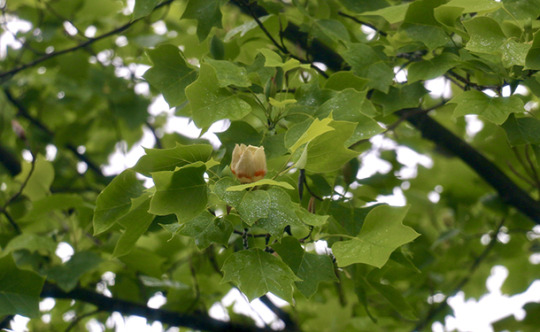
alt="Trees like tulip grow beautifully and cast a lot of shade when mature">
thetreecareguide.com gathered information and tips about 5 magnificent, fast-growing shade trees to help you convert your yard into a destination point.
1. Oak Tree (Quercus)

alt="Trees like oak grow beautifully and cast a lot of shade when mature">
In 2004, congress designated the oak as America’s national tree. There are more than 60 oak species considered native to the United States. Live oak thrives in Southern regions. In colder areas, it’s the northern red oak that does best.
Growing Conditions: This species will thrive in full sun conditions when planted in humus-rich, well-drained soil.
Water Requirements: Young oaks may need to be deep watered once weekly if rain is irregular until they establish themselves.
Hardiness Zones: 8 through 10
Adult Dimensions: Fully mature oaks typically reach 80 feet in height with a canopy spread of over 150 feet in diameter or 80 to 85 feet from trunk to branch tip in all directions.
Lifespan: 200 to 500 years
2. Elm Tree (Ulmus)

alt="Trees like elm grow beautifully and cast a lot of shade when mature">
With an unmistakable vase shape and its strong branches, elms are highly popular shade trees. However, Dutch elm disease decimated millions of American elms between the 1930s and the late 1980s. Disease-resistant varieties like 'Princeton' are now available. Keep in mind that planting an elm tree near sidewalks, walkways, driveways, and patios can lead to cracks and elevated areas.
Growing Conditions: This species thrives in full sun conditions when planted in moist, well-drained fertile soil.
Water Requirements: After planting your young elm tree, water it as often as two or three times per week for the first couple of weeks. Two months after planting, you should only be watering your elm once every week to 10 days.
Hardiness Zones: 8 through 10
Adult Dimensions: This species has a multi-branched crown supported by a thick, powerful trunk. It typically grows from 60 to 80 feet tall with a crown 40 to 60 feet in diameter.
Lifespan: 175 to 300 years
3. Maple Tree (Acer)

alt="Trees like maple grow beautifully and cast a lot of shade when mature">
No matter what size yard you have, there's a maple tree species to fit your shade tree needs. In addition to maple’s showy leaves, some varieties have attractive branch color and texture. Others like the red maple will display remarkable flower clusters.
Growing Conditions: Maple species thrive in full sun to part shade conditions when planted in medium to wet, well-drained, acidic (5.0-7.0 pH), and fertile soil.
Water Requirements: Maple trees need approximately 10 to 12 gallons of water per week to remain healthy.
Hardiness Zones: 5 through 9
Adult Dimensions: Maples grow to a height of 40 to 60 feet, and their crown reaches about 40' at maturity.
Lifespan: 140 to 300 years
4. Tulip Tree (Liriodendron tulipifera)
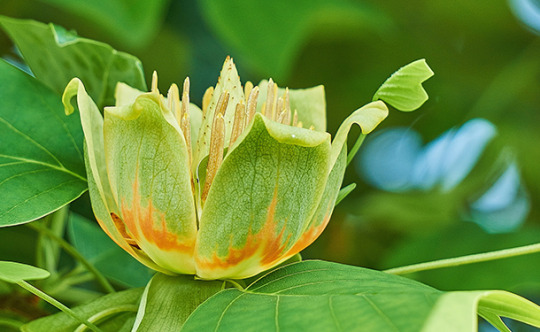
alt="Trees like the flowering tulip grow large and cast a lot of shade when mature">
This majestic species features a straight, resilient trunk and uniform oval crown. Noteworthy, broad, lobed leaves make spotting springtime tulip-shaped flowers difficult. This is a deciduous tree, and its leaves turn yellow in fall.
Growing Conditions: Tulip trees thrive in full sun and grow well in acidic, loamy, moist, sandy, and well-drained soils. They prefer average moisture but tolerate drought conditions in humid regions.
Water Requirements: Provide supplemental irrigation (5 to 10 gallons per week), especially during the summer, early fall, and drought conditions.
Hardiness Zones: 4 through 9
Adult Dimensions: The tulip tree can reach a height of 70 to 90 feet, and its canopy will spread about 40 feet at maturity.
Lifespan: 200 to 300 years
5. Magnolia (Magnolia grandiflora)

alt="Trees like magnolia grow beautifully and cast a lot of shade when mature">
The magnolia grandiflora species is a broadleaf evergreen tree (in warmer climates). It is noted for its dark green foliage and its large, fragrant flowers. The species is native to moist wooded areas in the southeastern United States. The leathery evergreen foliage is glossy dark green above and varies from pale green to gray-brown underneath. Seemingly oversized fragrant white flowers (up to a foot in diameter) will typically have six petals. Flowers begin blooming in late spring, and the tree can continue flowering throughout the summer.
Growing Conditions: Magnolia thrives in acidic (5.0 to 6.0 pH), well-drained, loamy, moist, and rich soil. Partial shade or full sun is ideal for this species. These trees should be mulched from the trunk to the edge of the dripline to make watering and fertilization easier.
Water Requirements: Water 2 to 3 times per week for the first six months after planting, giving the tree 2 to 3 gallons of water for each inch of trunk diameter.
Hardiness Zones: 7 through 10
Adult Dimensions: Magnolia grandiflora trees typically reaches 60 to 80 feet tall with a pyramidal to round-shaped crown.
Lifespan: 75 to 120 years
Shade Trees
In this article, you discovered several fast-growing shade trees, their descriptions, and their care information to help you liven up your yard.
Planting shade trees in your yard will help you create a refuge from the hot summer sun and naturally make your yard a more pleasant place to spend time in.
Not planting shade trees in your yard leaves you vulnerable to the heat and makes spending time outdoors less pleasurable.
Sources:
plants.ces.ncsu.edu/plants/magnolia-grandiflora/
gardeningsolutions.ifas.ufl.edu/plants/trees-and-shrubs/trees/oak-trees.html
ufi.ca.uky.edu/treetalk/ecobot-american-elm
extension.umn.edu/trees-and-shrubs/red-maple
landscapeplants.oregonstate.edu/plants/liriodendron-tulipifera
For the original version of this article visit: http://www.thetreecareguide.com/5-fast-growing-shade-trees-for-your-yard/
#tree#Tree Care#The Tree Care Guide#Oak Tree#Quercus#Elm Tree#Ulmus#Maple Tree#Acer#Tulip Tree#Liriodendron Tulipfera#Magnolia#Magnolia Grandiflora
0 notes
Text
By Your Side Until My Death (1/?)
Chapter 1: Welcome to my life
Available on AO3
Princess Artemis, the eldest daughter of the kingdom of Olympus is to be married to her childhood nightmare. In a land where anything remotely magical is banned, Zoë fears for her and Ladon's life but knows that she could never leave the princess's side if she tried. Magical beings, a forbidden romance, family secrets, and safety for magic all wait beyond the kingdom's borders.
- 3rd person, will be completed eventually, teen, not completed, Zartemis
Artemis walked quietly down the long hall towards her chambers her feet starting to ache from the long day. She had been nearing womanhood and had many dudes to perform as the princess. She passed her twin's door and felt a weight lift off her chest. Her father was already so busy with her brother's wedding that he wouldn’t have time to attempt to take away her freedom.
Her brother years ago was betrothed to the Princess Kalliope from the kingdom of Muse and would be talking the throne of Olympus from their father. Aries multiple affairs and violent nature and lack of any intelligence about anything other than war made him unfit to rule the kingdom.
Artemis and her younger sister were to be married off to other kingdoms to be nothing other than child-bearers and trophy queens meant to sit still and look pretty. Her younger brothers would take queens from other kingdoms and find their own plot of land to rule or take up some other high position of power, that opportunity that was not open to a woman.
A scowl crossed the Artemis’s beautiful features contorting them into something to be feared. This might have been one of the reasons the woman was able to avoid marriage for this long. One look from the princes would cause the receiver's blood to run cold as they staggered back from the aura of power she seemed to radiate. Most supers were put off by their wife having any control of their life.
The men were insecure and not used to the pure power and respect that the woman demanded and deserved. Artemis was brilliant compared to other women of her age but considering the fact that she had five brothers, it was quite easy to sneak away with Athena.
Her sister's brilliance put their father's scholars to shame, and being one of the younger royalty it was easier for her to get away with things and people were not as horrified with her bending a few rules as they were with Artemis. Athena's way with words could usually keep both of them out of trouble.
The two women were shocked at their brother's uninterest in learning about the world they lived in. The sky was filled with dragons, fairy, and Pegasus, and the woods filled with other magnificent creature of magic such as full shift werewolves, dozens of different kinds of elves, and it was even rumored that vampire hybrids still existed in the shadows of the woods and in the kingdom.
Artemis unconsciously reached up to run her fingers gently across her pointed ears that were covered by her long silver hair. The people that knew of them had ridiculed her for them saying that she was an untrustworthy half breed and asked why she couldn’t be more like her brother.
Many believed that supernaturals lived all around us and were untrustable beings of Staten, If it was true and there were supernaturals in the kingdom then you would never know. Artemis he’d herself seem a dozen people burned alive for accusations of being a being of magic. Though Artemis could not understand why the Kingdom was in the Vally of three huge mountains and the only way to get to the rest of society was through a dense forest with only one road and was filled with the creatures. The crown city, Mytikas where the royal family lived was in the center of the valley.
The moonlight filtered through the panned glass filling Artemis with energy and reflecting off the polished stone of the walls and ground that wasn’t covered with carpets and elegantly weaved tapsters that hung on the walls. Some were made by her sister's talented hands and others were bought from around the world.
Artemis reached her door causing two kights to step aside as she walked into the dimly lit chamber. The five guards that were following her positioned themselves in front of the two huge wooden doors and one followed her into the room. The doors closed with a thunk causing her two handmaidens to walk into the main room that Artemis and the guard now occupied. The two girls entered from the drawing-room and walked over to Artemis and bowed deeply.
“My lady,” they said simultaneously. Both girls had on simple floor-length dresses that were synched at the waist paired with leather lace-up sandals and simple calved circlets nested into their hair. The girl on the left had shoulder-length black spiky hair that refused to smother out without hours of work and heat. Freckles were splashed across her noes and her electric blue eyes held more respect for the princess than anyone in Artemis’s family besides maybe her sister. A simple sliver bracket sat on her wrist, the last thing her father had given her before leaving her and her mother and baby brother alone. A black sheepskin half-circle cloak hung over her shoulders covering her arms that fell to her thighs.
The girl on the left was shorter than her companion though both girls stood taller than a fair amount of the men their age. The girl's glossy black hair fell to the center of her back and matched with her piercing black eyes. A small tattoo sat inside her wrist, a marking from her previous home. The girl wore a smiler clock of a royal purple only hers was made from one of Artemis's old dresses.
"Hello ladies," Artemis smiled kindly at the handmaids as the guard walked over to the door and stood to the side of it and planted themselves there.
"Would you like me to draw you a bath, your highness?" The taller of the two asked.
"Yes, thank you, Reyna." Her father would have been scandalized to hear Artemis thank her, and call the ladies by their names, though Artemis saw them more like friends than servants. Artemis had vowed to take in the two unruly girls after the tragic situations that they had both been put through. The two of them still had plenty of courage and spirit but they had learned to use it in a way that would keep them from getting lashed.
The girls and her personal guard had been with Artemis almost her entire life, through her father's lectures, the court's ridicules, and her loneliness. Artemis walked over to her Quercus ilex wood vanity (AKA: Holly/Holm Oak) and lowered herself into the soft feather stuffed cushion as Thalia walked over with her and began to take out the few ribbons that were braided into the princess's hair. Artemis let out a sigh as her long hair was loosened and Thalia began to run a soft brush through Artemis's long silver hair then helped her out of her large ensemble of cloths then helped her into a gold silk robe embroidered with intricate silver designs.
"You are allowed to take off your helmet here, no one is allowed in without my permission," Artemis said turning to face her personal guard as Artemis wrapped the robe tighter around her form.
"Thank you, your highness," The girl bowed and removed the silver helmet revealing her coppered color skin, brown eyes, pointed ears, and long dark hair that was braided tightly against her skull. Zeus was basically forced to accept Zoë into the royal guard when Artemis scared off all the others and despised the idea of having a man be around her 24-7. Even with her small stature, and the fact that she was female, Zoë was one of the best knights in the kingdom. What she didn't have in pure strength she doubled with speed, grace, and intelligence.
"Of course," Artemis said walking over to where Reyna stood next to a large tub of boiled water. The bath smelled of roses and cinnamon and pedals swirled in the hot water. Artemis let the robe drop to the floor as she stepped into the warm water. Reyna began to rub something sweet-smelling into the princess's hair while conversing with the others in the room.
"My lady?" Thalia repeated shaking Artemis from her warmth cased daze. "Did you hear what I said?" Thalia politely asked.
"I missed it, would you please repeat it?" Thalia nodded her head as she began to speak once more.
"His majesty seemed extra happy today, we were speculating on the reason he was in such high spirits."
"We assumed that it couldn't be Prince Apollo's engagement since that happed weeks ago," Zoë chimed in. Artemis turned to look at the shorter woman who now stood at the entrance to the bathroom rather than near the large doors.
"I'm sorry to say that I have no information for you," Artemis said frowning slightly. Her father had been more distant than usually in the past week but she had no idea why. "I shall ask Athena about it tomorrow, maybe she has heard something we have not." The three nodded their heads as Thalia went to grab a soft towel and wrapped the fabric around Artemis as she stepped out of the water.
Artemis walked into her room and pulled on her nightgown waving aside the handmade's offer of assistance. She then sat down on the large bed scooting to the side to allow Thalia to sit down next to her and once again run a brush softly through her damp hair.
"Have your burns healed yet?" Artemis said turning to look at Zoë who nodded her head.
"They have gotten much better thanks to the ointment you gave me," she said bowing her head slightly. "Thank you for the concern," Zoë said, as her cheeks pinked. Artemis smiled at the guard then turned to thank Thalia. After she had put the brush back, Artemis released the girls for the night thanking them once again.
After they had gone Zoë walked back over to the door and stood guard, "Good Night you highness," she said softly. The gentle orange candlelight danced across the walls causing the princesses to let out a yawn.
"Good Night Zoë," Artemis said as her eyes slowly drifted closed.
1 note
·
View note
Photo

Trees. Anyone who spends time walking along the ‘cliffs’ in Westcliff/Southend will have seen the wonderful collection of Holm Oaks, or Quercus ilex, that reside there. These magnificent evergreen trees are often planted in coastal locations due to their tolerance of salt spray, they have a beautifully shaped crown and can grow up to 20 metres tall. Maybe not suitable for your average garden, but great for snoozing under on a gorgeous sunny afternoon, or climbing when out for a daily walk 🌳 #holmoak #quercusilex #treetuesday #treesofinstagram #plantsofinstagram #urbantrees #coastaltrees #coastalgardendesign #coastalplanting #southendonsea #seasideplanting #gardendesigner #gardendesignersouthend #gardendesignerleigh #gardendesignersofinstagram #thegardenrevampcompany #smallgardendesign #urbangarden #urbangardendesign (at Westcliff-On-Sea Seafront) https://www.instagram.com/p/CAp8N81F6vk/?igshid=1r3b8znz9sifn
#holmoak#quercusilex#treetuesday#treesofinstagram#plantsofinstagram#urbantrees#coastaltrees#coastalgardendesign#coastalplanting#southendonsea#seasideplanting#gardendesigner#gardendesignersouthend#gardendesignerleigh#gardendesignersofinstagram#thegardenrevampcompany#smallgardendesign#urbangarden#urbangardendesign
0 notes
Photo
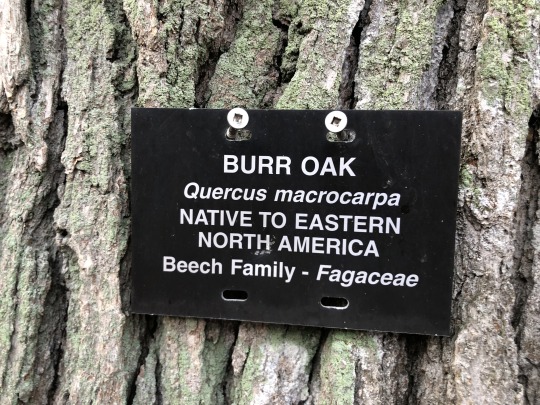

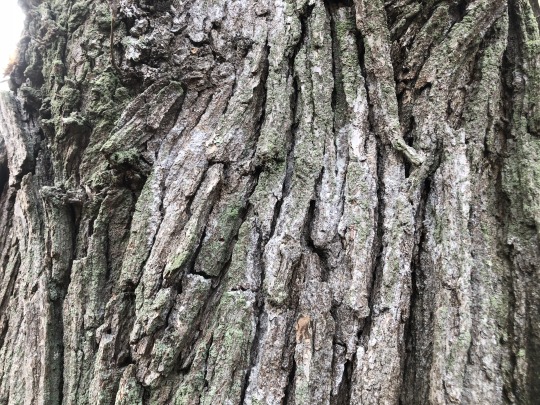
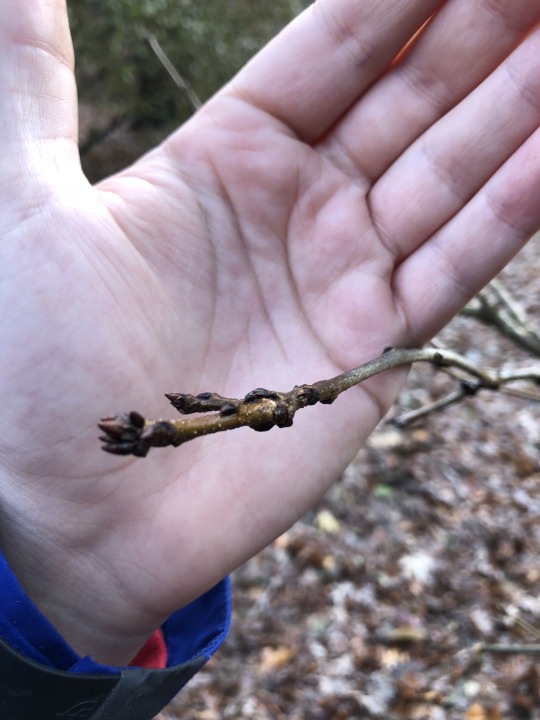

Quercus macrocarpa / Burr Oak
Family: Fagaceae
Native: Northern and central United States, southeastern Canada
Mature Size: 60-80ft height, 60-80ft spread
Habitat: light but rich, medium moisture, soils that drain well;
Hardiness Zone: 3-8
Leaf Color: yellowish-green flowers in the spring; leathery, dark green leaves in the summer
Flower color/Bloom time: Yellowish-green; April
Enclosure:
The Burr Oak is a broad-spreading tree with a rounded crown. The height of this tree in maturity as well as the perceived thickness of the central, vertical trunk indicates that the Burr Oak is suitable for supporting a large treehouse structure. A potential issue with a large structure in this tree, however, is that the branch geometry is diagonal upwards, to the point that branches can not be relied upon for additional structural support. Additional programmatic functions of such a structure could be a hunting post, a wildfire lookout, or a park ranger’s outpost. A treehouse structure of this function can be blended into the landscape by following the height and form of the tree.
Examples of Spiral Treehouse Structures:
1) No-damage spiral staircase: sand-cast aluminum joints cushioned with neoprene pads that rest against the tree (Tadashi Kawamata method).
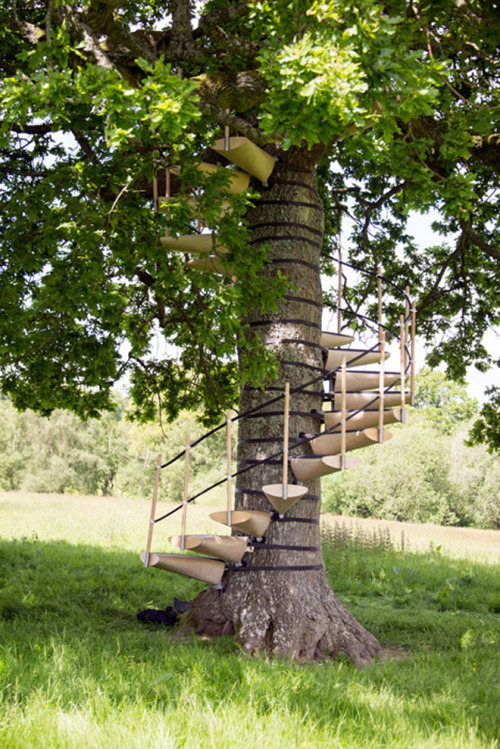
https://www.treehugger.com/sustainable-product-design/canopy-stair-thor-ter-kulve-robert-mcintyre.html
2) Artist Studio in Calvados, France: spiral staircase uses external structural supports and a combination with the Tadashi Kawamata method. The main deck sits on large branches and not directly on the central trunk, but the interaction between the lumber deck on the tree will cause damage.

https://nypost.com/2016/04/25/tour-the-worlds-most-magnificent-treehouses/
Sources:
Lady Bird Johnson Wildflower Center https://www.wildflower.org/plants/result.php?id_plant=QUMA2
Arbor Day Foundation https://www.arborday.org/trees/treeguide/TreeDetail.cfm?itemID=874
Go Botany https://gobotany.nativeplanttrust.org/species/quercus/macrocarpa/
Missouri Botanical Garden https://www.missouribotanicalgarden.org/PlantFinder/PlantFinderDetails.aspx?kempercode=a902
North Carolina Plant Toolbox https://plants.ces.ncsu.edu/plants/quercus-macrocarpa/
Plants for a Future https://pfaf.org/user/Plant.aspx?LatinName=Quercus+macrocarpa
#fagaceae#large structure#small structure#circulation#zone3#zone4#zone5#zone6#zone7#zone8#North America Native#OakHickoryForest
0 notes
Text
Those Useless Trees — The Valley Oak

A couple of days ago my friend Mike and I decided to go for a hike in Malibu Creek State Park. Having celebrated a friend’s birthday the previous night into the following morning, a good moderately strenuous ramble seemed like just the thing. We were both awed by the park’s stunning vistas as well as its many magnificent valley oak trees, the largest oak species in North America and a species found only in California.

Inside the Malibu Creek State Park
The 3,324-hectare park, although opened to the public in 1976, of course, has a much older history. The first humans to arrive in the area where likely the Chumash, who established the village of Talepop (or Ta’lopop) within what’s now the park. About 3,500 years ago — thousands of years after the Chumash settled the area — the Tongva arrived from the east and the Malibu Creek, which drains the Santa Monica Mountains, became a sort of border between the two nations. Downstream the river flows into the Pacific Ocean at an estuary the Chumash referred to as “U-mali-wu,” meaning “it makes a loud noise there.” The Spanish, who arrived in the 16th century, recorded the name as Malibu.

Languedoc?
Although neither Mike nor I had ever been to the park before, we’d both seen it in many films and television series. The striking Goat Buttes, in particular, have served as a popular setting in Hollywood fictions. Before reading a sign informing us that the outcroppings were in the series, M*A*S*H, I was reminded by the chaparral-covered prominences of a childhood summer spent in Languedoc. After learning that the semi-arid oak landscape had been used to evoke green, temperate Korea for eleven seasons of the long-running Korean War comedy, I was struck by how unlike the scenery reminded me of any I’d seen in Korea, which I visited last summer. Of course, come to think of it, the cast of that show’s hairstyles seemed suspiciously ’70s for a war which took place from 1950-1953.

Coast live oaks on a hill
The valley in which we stood was carpeted with brittle, yellow grasses and scruffy oak trees. Most of the oaks in the oak savanna were coast live oak (Quercus agrifolia), also known as California live oak, those familiar oaks which during the rainy season fleetingly give the landscape of rolling hills on which they often grow the appearance of the Shire. Elsewhere in the park, there are stately sycamores and the southernmost grove of redwoods. There are, naturally, many varieties of native fungi and fauna as well, and during our visit, we observed a small herd of mule deer, various lizards, a covey of quail, a couple of rabbits, a California tarantula, a gracefully gliding heron, a red-tailed hawk, a flock of pigeons, and several other birds which I didn’t recognize.

Some of the oaks obviously unlike the others. They were taller, their silhouettes patchier, their branches droopier than the dome-like coast live oaks, the canopies of which spread out like gauzy green umbrellas over the gently rolling hills. As a child growing up in Missouri’s Little Dixie, I roamed the forests and knew my red cedars from my red maples, my black walnuts from my bladdernuts, my corkwoods from my dogwoods, my pawpaws from my possumhaws. I don’t remember learning most of their names and characteristics, though, and because of that, I hoped — however unrealistically — that I’d over time somehow simply absorb a similar knowledge Southern California’s trees. Having now lived in Southern California longer than anywhere else, I have unfortunately found that I have to make an effort to learn them.
I observed the oaks that were not coast live oaks. Whereas the leaves of the coast live oak are small, shiny, prickly, and look a bit like those of a holly shrub, the leaves of these oaks were lobed and looked almost leathery, faintly fuzzy. The leaves were clustered rather than spread across the branches’ tips. The bark was sort of silvery brown and almost uniformly wrinkled whereas the trunks and branches of the coast live oaks appear contorted and gnarled. It was clear that these were not coast live oaks — but I was no closer to identifying them than I had been when Mike had asked me what they were and so I turned to PlantSnap, an app which has, since downloading, successfully identified about 30% of the plants I’ve used it to recognize. It also identifies fungi — but with a track record like that, I wouldn’t use it for foraging unless I was completely OK with a painful death. This time the app proved successful, however, notifying me that the tree was most likely a Quercus agrifolia, or valley oak (it was) or, perhaps, a staghorn fern or loquat (it was obviously not). Valley oaks are also known as robles, as in Paso Robles.
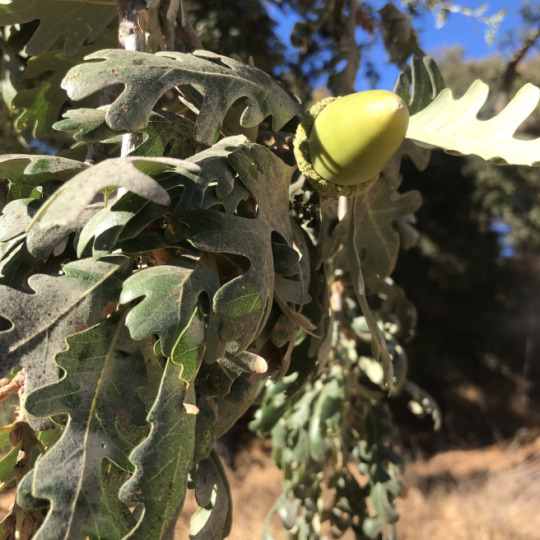
I was struck by the appearance of the valley oaks acorns, which were considerably longer than those I was accustomed to. They provide food for, among other animals, acorn woodpeckers, California ground squirrels, California scrub jays, and yellow-billed magpies. Historically, they were also an important food source for the Chumash, who never developed agriculture as they were able to live comfortably off of what they foraged and hunted.

Mule deer eating valley oak leaves
The woody parts of the valley oak support California gall wasp, red cone gall wasp, and Chionodes petalumensis. As we approached a beckoning oak woodland, we stopped to watch a large family of mule deer, one of whose members spent a great deal of time standing on his hind legs and helping himself to the leaves of a large tree.
The roots of the valley oak have intimate symbiotic associations with many of the region’s mycorrhizal fungi which are essential to their survival — and one of the main reasons Southern California should favor the planting of native trees over imports like the pepper trees, goldenrains, jacarandas, bottle brushes, &c which, although drought tolerant, are simply incapable of slotting into an ecosystem which evolved over millions of years without them.
The valley oak is endemic to California, where its range stretches along the valleys and foothills of San Diego County in the south to Sikiyou County in the north. They live to be up to 600 years, which means that the oldest trees were alive during the fall of Constantinople, the invention of the printing press, the domination of Central Asia by Tamerlane’s Timurid Empire, and closer to home, the rise of the Inca and Aztec empires.
Until it fell on 1 May 1977, the tallest valley oak was the so-called “Hooker Oak,” which stood until then in Chico. Because its trunk had a massive diameter of 8.8 meters, its age was at the time estimated to be over 1,000 years old. However, once dead it was determined that the tree owed its girth to the fact that it was in fact two specimens, both of roughly 325 years of age, which had long ago grown together into one. It appeared in many films where it proved a natural in its many roles as a tree.
The Adventures of Robin Hood (1938), co-starring the Hooker Oak
The current tallest valley oak is the so-called “Henley Oak,” a specimen which towers 47 meters above the floor of the Round Valley in Covelo. It is named after Thomas J. Henley, a one-time Superintendent of Indian Affairs notable for opening the region to European-American settlers in defiance of a federal order which had promised the land to Native Americans, resulting in a great deal of regrettable bloodshed between indigenous Californians and immigrants. The tree is believed to be more than 500 years old, meaning it sprouted from an acorn and was possibly producing its own well before the first Spanish galleon, San Salvador, sailed along the coast.

The Henley Oak (source unknown)
Mike and I turned back after reaching Rock Pool, and again we crossed the valley featured in M*A*S*H. This time, surprisingly, I did find myself somewhat reminded of Korea — or at least of Korean (and Chinese) landscape painting. By this time, the sun had set and the gold hour was transitioning to blue. The oak woodland seemed to be climbing up the base of the improbably steep sandstone hillsides. Tipping the scales of perception, perhaps, was the presence of a Korean family attempting to take photos of a toddler with the scenery as a backdrop.

Korean landscape painting? Oak woodland at the base of low mountains
I sometimes have a physical sensation of being pulled into the woods and the longer I looked at the trees, the stronger the pull seemed to grow. I had to fight the urge to enter the forest because the park had officially closed the moment the sun sank behind the horizon and currently, there is no overnight camping because in June, 35-year-old Tristan Beaudette was shot to death in the tent he was sharing with his two young daughters. Since then, rumors and other reports of gunfire in the park have emerged both following the murder and stretching back to 2016 and there’s an ongoing investigation.

Vacant campsite under a canopy of oak trees)
Hopefully, the murderous gunman will be caught and peace and campers will again return to the park. It looks like a really wonderful place to pitch a tent for a weekend, perhaps do a bit of forest bathing, or even just contemplate the scenery. As we continued toward the exit, the crescent moon (which had hung in the sky throughout our day) was now shining brightly and bats were flitting about in search of a meal. We hurried our pace and left the park without incident.
Eric Brightwell is an adventurer, writer, rambler, explorer, cartographer, and guerrilla gardener who is always seeking paid writing, speaking, traveling, and art opportunities. He is not interested in generating advertorials, cranking out clickbait, or laboring away in a listicle mill “for exposure.”
Brightwell has written for Angels Walk LA, Amoeblog, Boom: A Journal of California, diaCRITICS, Hidden Los Angeles, and KCET Departures. His art has been featured by the American Institute of Architects, the Architecture & Design Museum, the Craft & Folk Art Museum, Form Follows Function, Los Angeles County Store, the book Sidewalking, Skid Row Housing Trust, and 1650 Gallery. Brightwell has been featured as subject in The Los Angeles Times, Huffington Post, Los Angeles Magazine, LAist, CurbedLA, Eastsider LA, Boing Boing, Los Angeles, I’m Yours, and on Notebook on Cities and Culture. He has been a guest speaker on KCRW‘s Which Way, LA? and at Emerson College. Art prints of Brightwell’s maps are available from 1650 Gallery. He is currently writing a book about Los Angeles and you can follow him on Ameba, Facebook, Goodreads, Instagram, Mubi, Twitter, and Weibo.
Click here to offer financial support and thank you!

Source: https://ericbrightwell.com/2018/09/18/those-useless-trees-the-valley-oak/
0 notes